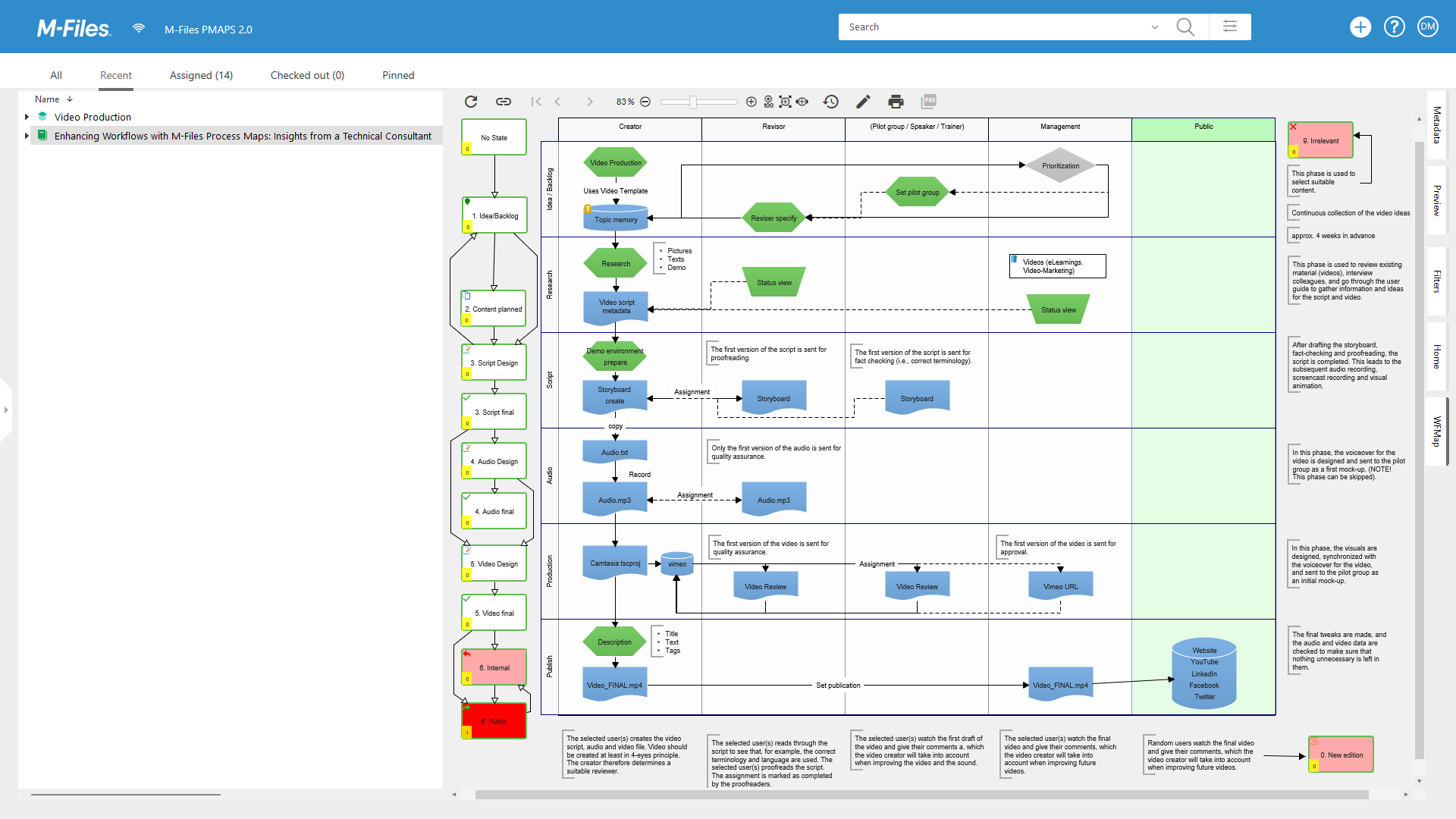meta data for this page
Video Production Workflow
The creation of our videos can be divided into different phases. It's important to note that the specific steps and processes may vary depending on the type of video, the budget, and the resources available. For example, an e-learning video is produced differently than a commercial or a customer documentary. Each phase has its own specific tasks and goals. Here is a basic overview of the process:
One of the most common use cases for Workflow Maps (see Create Workflow Maps) in M-Files Process Maps is a tabular representation of individual work steps within the workflow and associated roles. Using this representation, an organization can not only quickly describe which role is responsible for which workflow step, but also determine which other roles should be involved based on M-Files' dynamic workflows. This enables clear assignment of responsibilities and promotes efficient collaboration within the team by ensuring that everyone knows exactly what tasks and responsibilities are assigned to them. It also helps to identify and address potential bottlenecks or overlaps in workflows at an early stage. By clearly defining roles and responsibilities, the company can ensure that content projects are completed smoothly and on time, while ensuring quality and consistency of work.
The individual video project is stored as a multi-file document in M-Files so that scripts, stroyboards, image and audio content can be collected and combined there. The project is linked to a workflow that is divided into phases, so in each workflow step a process map is automatically displayed that marks the workflow status and thus the row within the table.
The columns of the table list the roles involved in the production. These responsible persons are specified in more detail on the metadata card. They receive automatic assignments in the M-Files workflow throughout the project, for example, to control and approve content.
There are flow chart elements in the swim lanes that describe the workflow within a project phase. This reduces the complexity of the actual M-Files workflow because the necessary steps are described on the process map and are supplemented with M-Files links and documents.
In this way, complexity can be reduced and clarity increased at the same time. The standard M-Files functionality of the workflows is excellently enhanced by the multidimensional representation within the process map.

